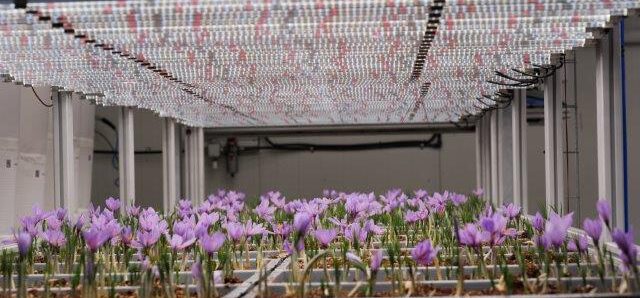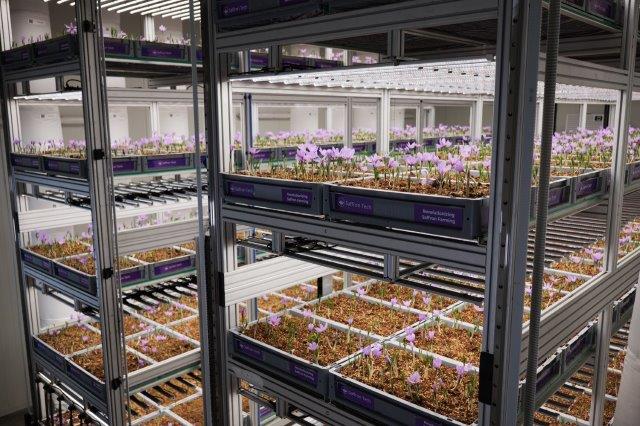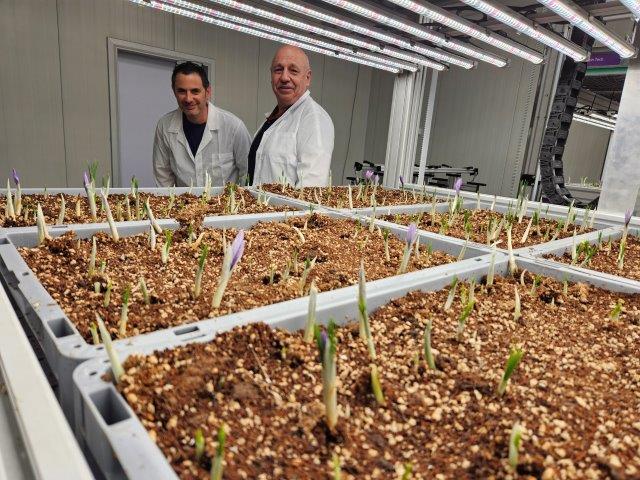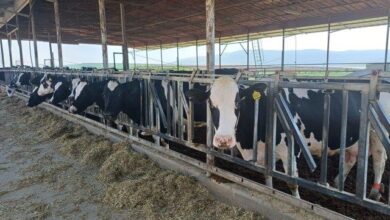Saffron Tech – Revolutionizing Saffron Cultivation

More Growing Cycles, Less Energy, and Higher Yields
Saffron Tech, located in the heart of a plantation area in the southern part of the country, offers no outward indication of the high technological level within its facility. Visitors would never guess the cutting-edge technology that awaits them inside the company’s building.
Upon entering the building, we met Tal Wilk Glazer, the CEO, who transitioned from the high-tech sector and has a sparkle in her eyes: Shimon Weitmann, a systems engineer overseeing the factory’s various systems. Alongside a team of agronomists and the Operations Manager, they lead an innovative enterprise growing saffron in a controlled environment.
Why Saffron?
Saffron is renowned for its culinary and medicinal uses, particularly in Eastern cultures. Recent studies have highlighted its numerous health and nutritional benefits, driving interest in its use as a natural dietary supplement and cosmetics source. Derived from the stigma of the Crocus sativus flower, saffron is the most expensive spice globally due to its labor-intensive hand-harvesting process.
Health Benefits of Saffron:
– Antioxidant-Rich: Contains powerful antioxidants like kaempferol with strong anti-inflammatory properties.
– Aids Weight Management: Reduces cravings and stress-induced eating by balancing mood.
– Anti-Inflammatory: Treats various inflammatory conditions, including gastrointestinal issues from stress.
–Enhances Libido and Mood: Folk medicine claims saffron boosts libido, improves mood and aids insomnia.

Challenges in Traditional Saffron Cultivation
Saffron’s high cost and inefficient traditional growing processes have limited its widespread use. It takes approximately 140 flowers to produce one gram of saffron. The entire field blooms simultaneously, requiring labor-intensive, simultaneous harvesting. These factors have restricted saffron cultivation to countries with cheaper labor, such as Iran, Afghanistan, Morocco, and Spain.
Saffron Tech’s Innovative Approach
Against the backdrop of the challenges in saffron cultivation, Saffron Tech has emerged with innovative solutions. After three years of research and development, conducted in collaboration with company agronomists and the Volcani Institute, the company has successfully developed a protocol for optimal vertical cultivation of saffron. This breakthrough allows for up to four cultivation cycles per year, compared to the traditional single annual cycle, making saffron cultivation both scalable and economically viable.

Key Innovations
Vertical Cultivation: Maximizes space and yield, allowing for multiple annual harvests.
Energy-Efficient Lighting: Developed with HORTIV Megalight provides an optimal growth spectrum while reducing energy consumption.
Automated Autonomous Systems: AI-driven automation manages lighting, climate control, irrigation, and harvesting, optimizing all cultivation aspects.
The Road to Commercial Cultivation – Energy
Tal: “We have come a long way, experimenting with various technologies until we found a simple and economical solution. Since a significant component of our system is lighting, we turned to HORTIV Megalight which designed a system that meets our specific spectrum needs maintaining the lowest power consumption Beyond providing a technological solution, HORTIV Megalight proved to be a reliable partner—always available, accessible, and knowledgeable in the field.”
Shimon: “I was pleasantly surprised by their flexibility. We had worked with other lighting suppliers at our trial site, but after experiencing ‘ HORTIV Megalight‘, we chose to continue with them.”
Tal: “The significant advantage of our current lighting system lies in its energy efficiency. It can adjust and lower energy consumption as needed, which is crucial since electricity costs for the LEDs represent our highest expense. Any reduction in energy use directly translates to economic savings. While we constantly review our lighting setup, we have learned that ‘less is more’—even small reductions and tuning wavelengths can lead to substantial energy savings. Lighting is a critical component of our growing protocol, impacting not only the quantity and quality of our crop but also our electricity consumption. Precision in lighting ensures we achieve quality, economy, and maximum yield.”
Saffron Tech has developed a holistic solution encompassing agronomy, software, and mechanical engineering to provide optimal growing conditions efficiently.

Future Goals
From a technological perspective, the company’s next goals include addressing key bottlenecks, particularly in the picking process, by finding automated solutions to reduce the need for additional personnel. Additionally, they aim to enhance the efficiency and cost-effectiveness of the lighting system. At present, the system operates autonomously with all data stored in a large database. Improving these areas will be crucial for the successful scaling of their saffron production.
After reaching a scalable technology for growing saffron, the company’s goal is to double the existing structure and technology to establish a factory capable of producing saffron in commercial quantities. Currently, the management’s main objective is to find investors to fund this venture. Ideally, the factory would be located in Israel due to logistical ease, but they are also considering international locations to reduce personnel and energy costs.
Saffron Tech is positioned to revolutionize saffron cultivation, making this precious spice more accessible and affordable while maintaining its high quality and health benefits.




